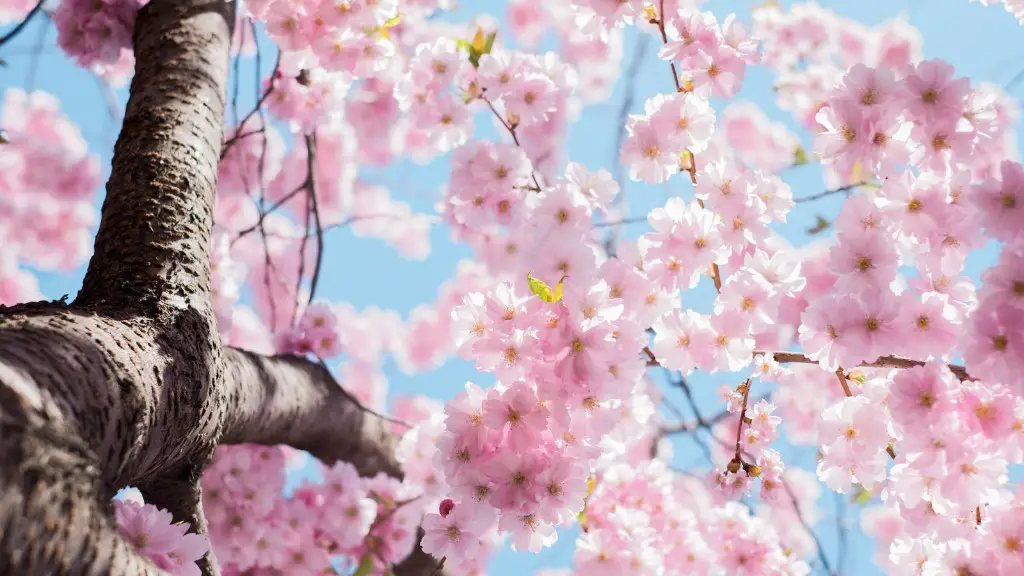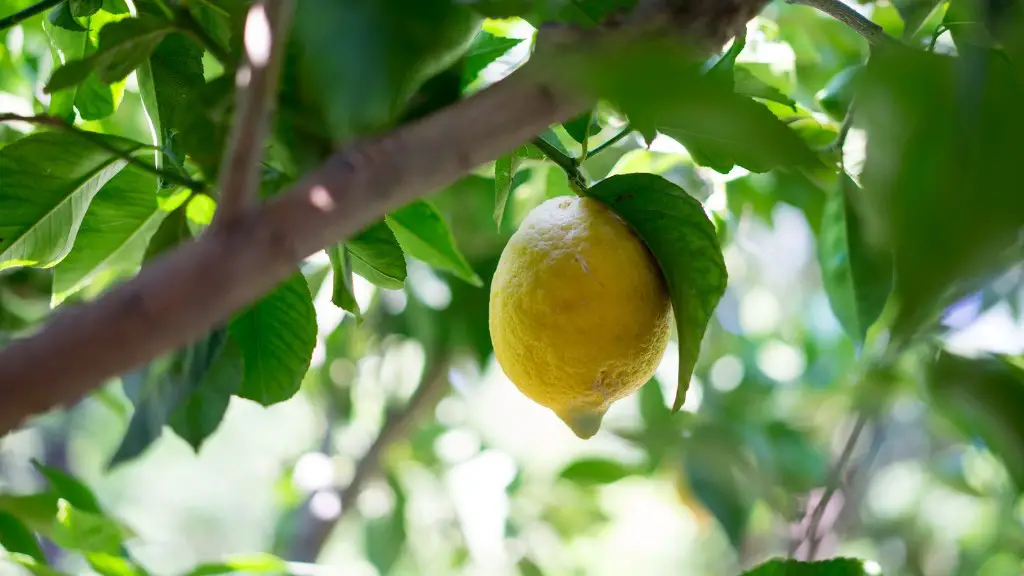Cherry trees are a popular fruit tree to grow in the home garden, and they can be started from seed. Growing a cherry tree from seed is a slower process than starting from a young tree, but it can be done successfully with the right care. Here are some tips on how to grow a cherry tree from seeds:
1. Start with fresh, good-quality seeds. You can get these from a reputable seed company or from a cherry tree that is bearing fruit.
2. Clean the seeds and remove any pulp or flesh that is still attached.
3. Plant the seeds in a sterile potting mix and cover them lightly with soil.
4. Keep the seedlings in a warm, bright place and water them regularly.
5. When the seedlings are big enough to handle, transplant them into individual pots or into the garden.
With patience and care, you can successfully grow a cherry tree from seed. Enjoy the fruits of your labor in a few years’ time!
There are a few things to consider when growing a cherry tree from seed. First, the cherry tree must be stratified, or chilled, in order to germinate. To do this, place the seeds in a moistened paper towel and store them in a sealable bag in the refrigerator for about three months.
After stratification, sow the seeds about 1/4 inch deep in a seed-starting mix in a pots or flats. Water the soil and place the pots in a warm location, such as on top of a refrigerator, until the seeds germinate. Once the seedlings sprout, transplant them into individual pots filled with potting soil.
Cherry trees need full sun and well-drained soil to thrive. When transplanting the seedlings outdoors, choose a spot that meets these requirements.
Water the young trees regularly and fertilize them once a month during the growing season. Prune the trees each year to promote healthy growth.
Can you grow a cherry tree from store bought cherries?
You can grow cherries at home using pits from locally grown cherries, but fruit production will take longer using this process. Use pits from cherries that are grown locally or purchased from the farmer’s market. Avoid using the pits from grocery stores as they may not be compatible with the climate in your area.
If you want to plant a fruit tree, it’s best to start with a fresh, ripe fruit. The flesh of the fruit needs to be removed before planting. Enjoy the fruit and wipe off the last bits clinging to the seed with a damp paper towel. If it’s still early or mid-summer, let the seeds dry on a paper towel for a couple days, then store in an airtight container in a cool spot.
What month do you plant cherry seeds
When planting cherry trees, it is best to do so in early spring or late fall. This is because the ground is softer and has a higher moisture content during these times, which is ideal for the tree. The tree should be planted in a sunny spot with good air circulation and deep, well-drained soil. Once planted, be sure to apply mulch and water the tree well.
Weeping cherry tree seeds will germinate within four months to one year if the lights are allowed to run for 14 hours a day.
Do you need 2 cherry trees to produce fruit?
One sour cherry tree needs to be planted for pollination and fruit set. Many sweet cherry varieties cannot produce fruit from their own pollen and are considered self-unfruitful. These plants require cross-pollination for fruit set.
Cherry trees can be propagated by stem cuttings or grafting. Stem cuttings refer to any stem that is cut to produce a new plant. This new plant will be identical to the “mother plant”. Cherry trees are usually semi-hardwood (summer or fall) or hardwood cuttings (during dormant season when wood is hard and mature).
Can you just plant a cherry seed?
Cherry trees are generally propagated by grafting or budding. Named cultivars will not come true from seed. Trees grown from seed or cuttings will be much larger trees than those grafted onto a chosen rootstock, and will be slower to start fruiting.
If you want to give your seeds the best chance of germination, you should soak them before planting. Soaking allows the seeds to uptake moisture more easily, which speeding up the germination process and increasing the germination rate.
Can cherry trees grow in pots
With careful selection of cultivars and appropriate growing methods, it is possible to grow fruit such as apples, cherries, pears and plums in containers. This is a great way to grow fruit in a small garden, particularly as it keeps trees smaller than if they were grown in the ground.
Some tips for success include:
– Choose a dwarf or semi-dwarf variety of tree, as they will be smaller and easier to manage in a pot.
– Use a good quality potting mix, and make sure the pot has drainage holes.
– Water regularly, and fertilise tree every few weeks with a balanced liquid fertiliser.
– Place tree in a sunny spot, and protect from harsh winds.
With a bit of care, you can enjoy fresh homegrown fruit straight from your own patio or balcony!
You’ll need:
-Paper towel
-Small bowl
-Water
First, place a paper towel in a small bowl and wet it very well. Then, use the paper towel to wipe down the surface of your counter. The wet paper towel will help to remove any dirt or grime that may be on your counter.
Where do cherry trees grow best?
Cherry trees need full sun to produce fruit, and to keep fungal diseases at bay. They also need well-drained, fertile soil to do their best. Give your cherry tree what it needs, and you’ll be rewarded with a bountiful harvest!
Cherry trees are a popular choice for home gardens, and growing them from seed is a fun and rewarding project. Put two to three pits into a small container filled with planting medium and water the seeds in. Keep the soil moist. When the cherry seedlings are 2 inches (5 cm) tall, thin them, removing the weakest plants and leaving the sturdiest seedling in the pot. With proper care, your cherry tree will produce fruit in 5-7 years.
What can you do with cherry pits
Cherry pits can be used in a variety of ways, including making vinegar, infusing liqueur, or using them as fuel for a BBQ. Cherry pits can also be used to make a heating pad or infused whipped cream.
This is a great way to get the cherry to fall out of the bottom of the bottle. Just take a couple of light taps on the bottom of the bottle and usually on the second tap, the cherry will fall out. You can also use this same method for other fruit like grapes and blueberries.
How tall is a 4 year old cherry tree?
The Barbados cherry tree is a beautiful tree that can grow up to 35 feet tall. The tree produces delicious, sweet-tart fruit that is perfect for making jams, jellies, pies, and other delicious treats. If you have the opportunity to plant one of these trees, you will be rewarded with many years of enjoyment.
Most trees are hermaphroditic, meaning that their flowers contain both male and female reproductive parts. Some species have male trees and female trees, which can be distinguished by their flowers. The male reproductive parts are the pollen-laden stamen, and the female parts are the egg-holding pistils.
Warp Up
Cherry trees can be grown from seed, although it is a lengthy process. The first step is to remove the pit from the cherry and crack it open. Next, the pit needs to be soaked in water for 24 hours. After soaking, the pit should be placed in a planting pot filled with moistened potting mix. It is important to keep the soil moist but not soggy. The pot should be placed in a sunny location. The seedling will sprout in approximately 6-8 weeks. Once the seedling has sprouted, it can be transplanted to an outdoor location.
There are a few key steps to growing a cherry tree from seed. First, the seeds need to be stratified, which means they need to be kept cool and moist for several weeks. Next, the seeds should be planted in a well-draining potting mix and kept moist. Once the seedlings appear, they should be thinned out and transplanted into individual pots. With proper care, your cherry tree will grow and bear fruit for many years to come.



